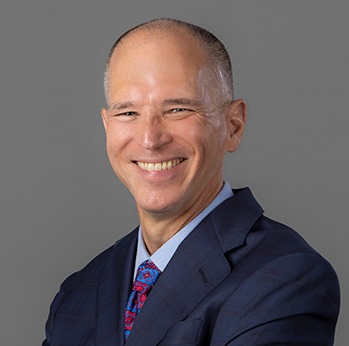The U.S. economy survived the COVID-19 pandemic and associated government-imposed business shutdowns with a variety of innovations that facilitated online shopping, contactless payments, and reduced use and handling of cash, a known vector of disease transmission.
While many of these innovations were new, they would have been impossible but for their reliance on an established and ubiquitous technological infrastructure: the global credit and debit-card payments system. Not only did consumers prefer to use plastic instead of cash, the number of merchants going completely “cashless” quadrupled in the first two months of the pandemic alone. From food delivery to online shopping, many small businesses were able to survive largely because of payment cards.
But there are costs to maintain the global payment-card network that processes billions of transactions daily, and those costs are higher for online payments, which present elevated fraud and security risks. As a result, while the boom in online shopping over this past year kept many retailers and service providers afloat, that hasn’t prevented them from grousing about their increased card-processing costs.
So it is that retailers are now lobbying Washington to impose new regulations on payment-card markets designed to force down the fees they pay for accepting debit and credit cards. Called interchange fees, these fees are charged by banks that issue debit cards on each transaction, and they are part of a complex process that connects banks, card networks, merchants, and consumers.

Regulation II—a provision of 2010’s Dodd–Frank Wall Street Reform and Consumer Protection Act commonly known as the “Durbin amendment,” after its primary sponsor, Senate Majority Whip Richard Durbin (D-Ill.)—placed price controls on interchange fees for debit cards issued by larger banks and credit unions (those with more than $10 billion in assets). It required all debit-card issuers to offer multiple networks for “routing” and processing card transactions. Merchants now want to expand these routing provisions to credit cards, as well. The consequences for consumers, especially low-income consumers, would be disastrous.
The price controls imposed by the Durbin amendment have led to a 52% decrease in the average per-transaction interchange fee, resulting in billions of dollars in revenue losses for covered depositories. But banks and credit unions have passed on these losses to consumers in the form of fewer free checking accounts, higher fees, and higher monthly minimums required to avoid those fees.
One empirical study found that the share of covered banks offering free checking accounts fell from 60% to 20%, the average monthly checking accounts fees increased from $4.34 to $7.44, and the minimum account balance required to avoid those fees increased by roughly 25%. Another study found that fees charged by covered institutions were 15% higher than they would have been absent the price regulation; those increases offset about 90% of the depositories’ lost revenue. Banks and credit unions also largely eliminated cash-back and other rewards on debit cards.
In fact, those who have been most harmed by the Durbin amendment’s consequences have been low-income consumers. Middle-class families hardly noticed the higher minimum balance requirements, or used their credit cards more often to offset the disappearance of debit-card rewards. Those with the smallest checking account balances, however, suffered the most from reduced availability of free banking and higher monthly maintenance and other fees. Priced out of the banking system, as many as 1 million people might have lost bank accounts in the wake of the Durbin amendment, forcing them to turn to such alternatives as prepaid cards, payday lenders, and pawn shops to make ends meet. Lacking bank accounts, these needy families weren’t even able to easily access their much-needed government stimulus funds at the onset of the pandemic without paying fees to alternative financial services providers.
In exchange for higher bank fees and reduced benefits, merchants promised lower prices at the pump and register. This has not been the case. Scholarship since implementation of the Federal Reserve’s rule shows that whatever benefits have been gained have gone to merchants, with little pass-through to consumers. For instance, one study found that covered banks had their interchange revenue drop by 25%, but little evidence of a corresponding drop in prices from merchants.
Another study found that the benefits and costs to merchants have been unevenly distributed, with retailers who sell large-ticket items receiving a windfall, while those specializing in small-ticket items have often faced higher effective rates. Discounts previously offered to smaller merchants have been eliminated to offset reduced revenues from big-box stores. According to a 2014 Federal Reserve study, when acceptance fees increased, merchants hiked retail prices; but when fees were reduced, merchants pocketed the windfall.
Moreover, while the Durbin amendment’s proponents claimed it would only apply to big banks, the provisions that determine how transactions are routed on the payment networks apply to cards issued by credit unions and community banks, as well. As a result, smaller players have also seen average interchange fees beaten down, reducing this revenue stream even as they have been forced to cope with higher regulatory costs imposed by Dodd-Frank. Extending the Durbin amendment’s routing provisions to credit cards would further drive down interchange-fee revenue, creating the same negative spiral of higher consumer fees and reduced benefits that the original Durbin amendment spawned for debit cards.
More fundamentally, merchants believe it is their decision—not yours—as to which network will route your transaction. You may prefer Visa or Mastercard because of your confidence in their investments in security and anti-fraud detection, but later discover that the merchant has routed your transaction through a processor you’ve never heard of, simply because that network is cheaper for the merchant.
The resilience of the U.S. economy during this horrible viral contagion is due, in part, to the ubiquitous access of American families to credit and debit cards. That system has proved its mettle this past year, seamlessly adapting to the sudden shift to electronic payments. Yet, in the wake of this American success story, politicians and regulators, egged on by powerful special interests, instead want to meddle with this system just so big-box retailers can transfer their costs onto American families and small banks. As the economy and public health recovers, Congress and regulators should resist the impulse to impose new financial harm on working-class families.





